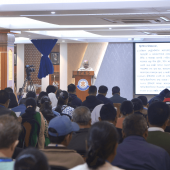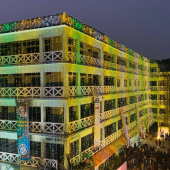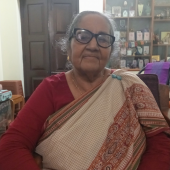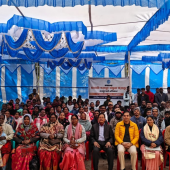In Bangladesh, after COVID-19, people suffer from dengue
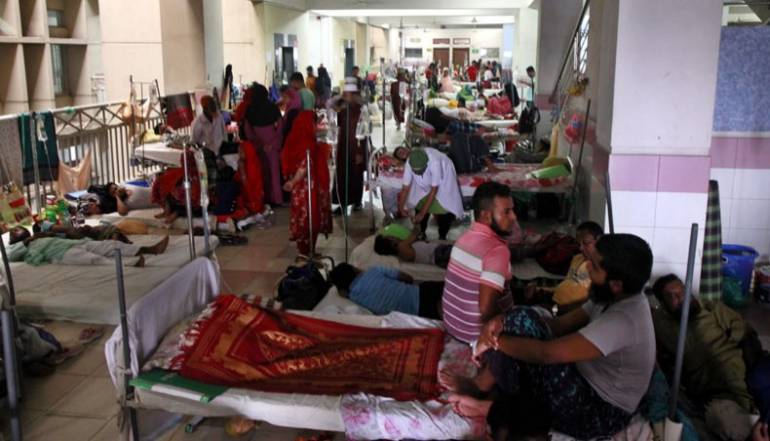
The new specter for Bangladesh is dengue fever, raising this year's death toll from the mosquito-borne disease to 110.
According to the Directorate General of Health Services (DGHS) report, four more dengue patients died in the 24 hours of October 20.
During this time, 896 more patients were hospitalized with viral fever as cases kept rising. Of the new patients, 537 were admitted to different hospitals in Dhaka and 359 outside it.
A total of 3,174 dengue patients, including 2,159 in the capital, are now receiving treatment at hospitals across the country.
The Directorate has so far recorded 28,698 dengue cases and 25,414 recoveries this year.
For the last three months, two Catholic children have been suffering from dengue fever. After that, they died.
On September 23, Dia Rozario, 10, and Singdha Gomes, 7, died on August 22. Both are from Tejgaon parish in the Archdiocese of Dhaka. Both were hospitalized, but it was impossible to save their lives.
Medical experts say that the changing pattern of dengue is worsening the conditions of children and elderly patients. Due to lingering dengue shock syndrome, children are suffering from pulmonary hemorrhage and heart failure.
Physicians at Dhaka Medical College Hospital, Mugda Medical College Hospital, Dhaka Shishu Hospital, Sir Salimullah Medical College, and Mitford Hospital said that they were receiving patients suffering from complications not seen in the previous year.
They added that about 40 percent of dengue cases were found in critical condition, while children’s conditions worsened quickly and were hard to manage.
People are saying that the rain is causing an increase in dengue cases in Dhaka city, even in October due to climate change.
Ahmadul Kabir, Deputy Director General of the Department of Health, said that due to climate change, dengue outbreaks have occurred in places where the disease has not been before. Most of the patients who arrived at the hospital had already been infected with dengue one or more times in the past. This shows that the symptoms are more acute.
The dengue situation in the country is still under control, urging people not to panic. The public needs to be vigilant since the number of patients is constantly increasing,
"We have given orders to government hospitals to ensure that no patient has to go home without treatment. They will provide the necessary manpower, beds, and logistical support," Kabir said.
The DGHS revealed its monsoon survey in September and found the mosquito density twice as high in Dhaka city as in the pre-monsoon survey.
He said that if anyone got infected with dengue previously with a serotype, their second-time infections would lead to dengue shock syndrome and hemorrhagic fever.
Of the 110 deaths this year, 65 died in Dhaka city, 1 in Narsingdi, 35 in Chattogram, 5 in Barishal, 2 in Khulna, and two in Mymensingh divisions.
The monthly number of deaths was 1 in June, 9 in July, 11 in August, and 34 in September, while 55 deaths were reported in the first 20 days of October.
Except for October, the number of hospitalized dengue patients was 9,911 in September, followed by 3,571 in August, 1,571 in July, 737 in June, 163 in May, 23 in April, 20 each in February and March, and 126 in January, according to the official data.
As many as 1,01,354 dengue patients were hospitalized and 179 of them died, which is so far the highest official figure since 2000, when Bangladesh started keeping records of dengue cases and deaths, according to the DGHS data (2019).
In 2021, at least 28,429 dengue patients and 105 deaths were officially recorded, which represented the second-highest numbers since 2000, when the government started keeping records of dengue deaths and hospitalizations. – Nikhil Gomes
Radio Veritas Asia (RVA), a media platform of the Catholic Church, aims to share Christ. RVA started in 1969 as a continental Catholic radio station to serve Asian countries in their respective local language, thus earning the tag “the Voice of Asian Christianity.” Responding to the emerging context, RVA embraced media platforms to connect with the global Asian audience via its 21 language websites and various social media platforms.









